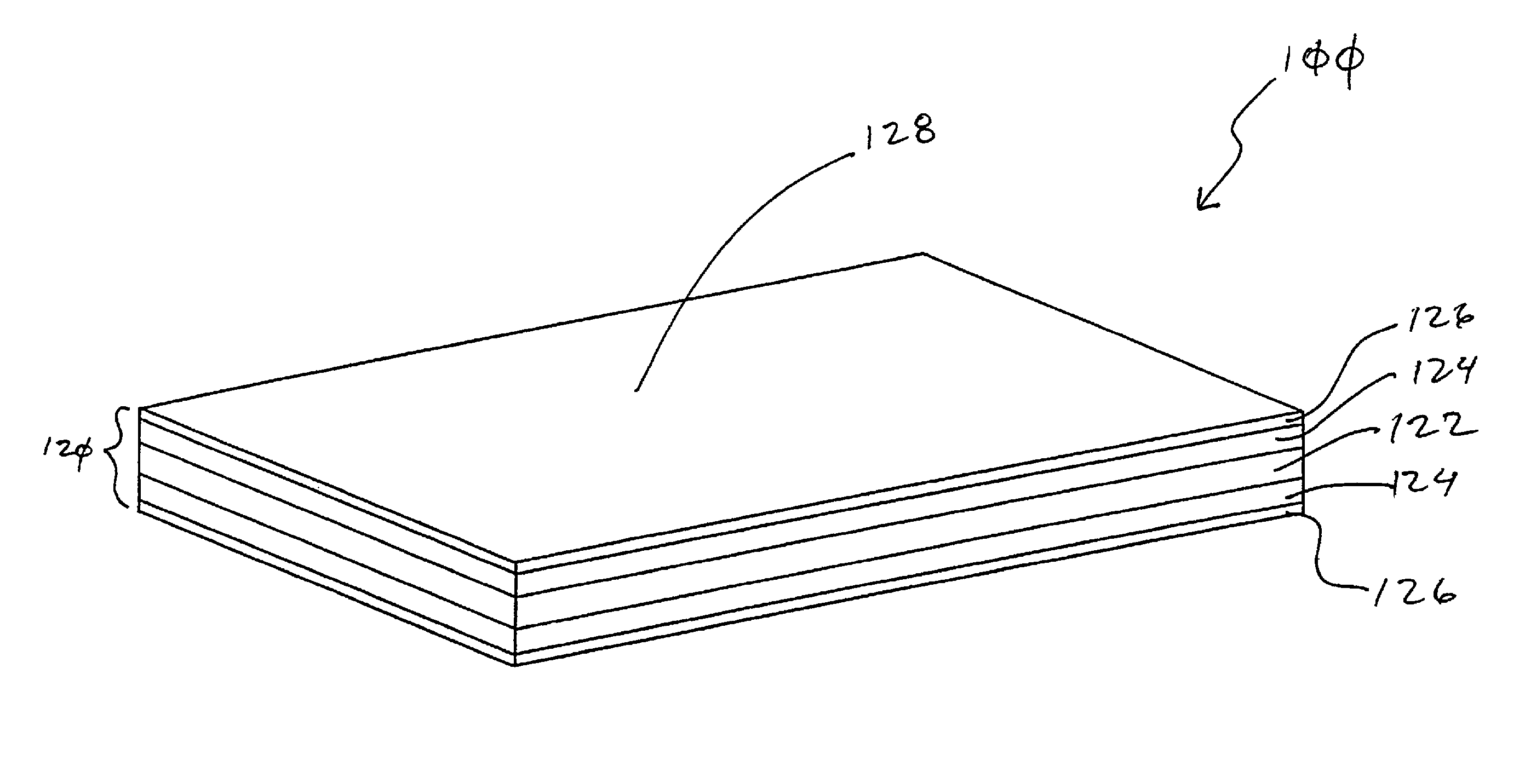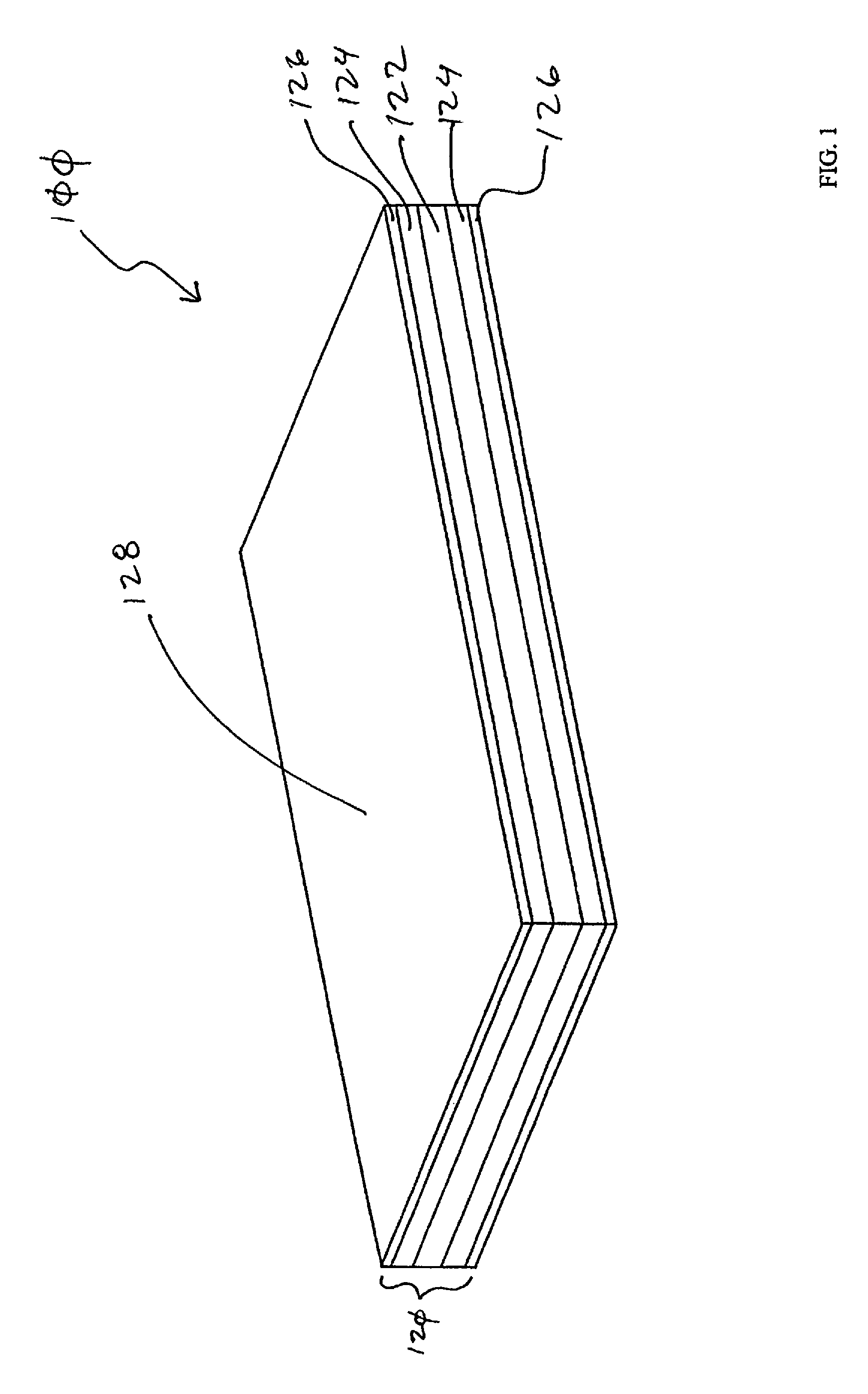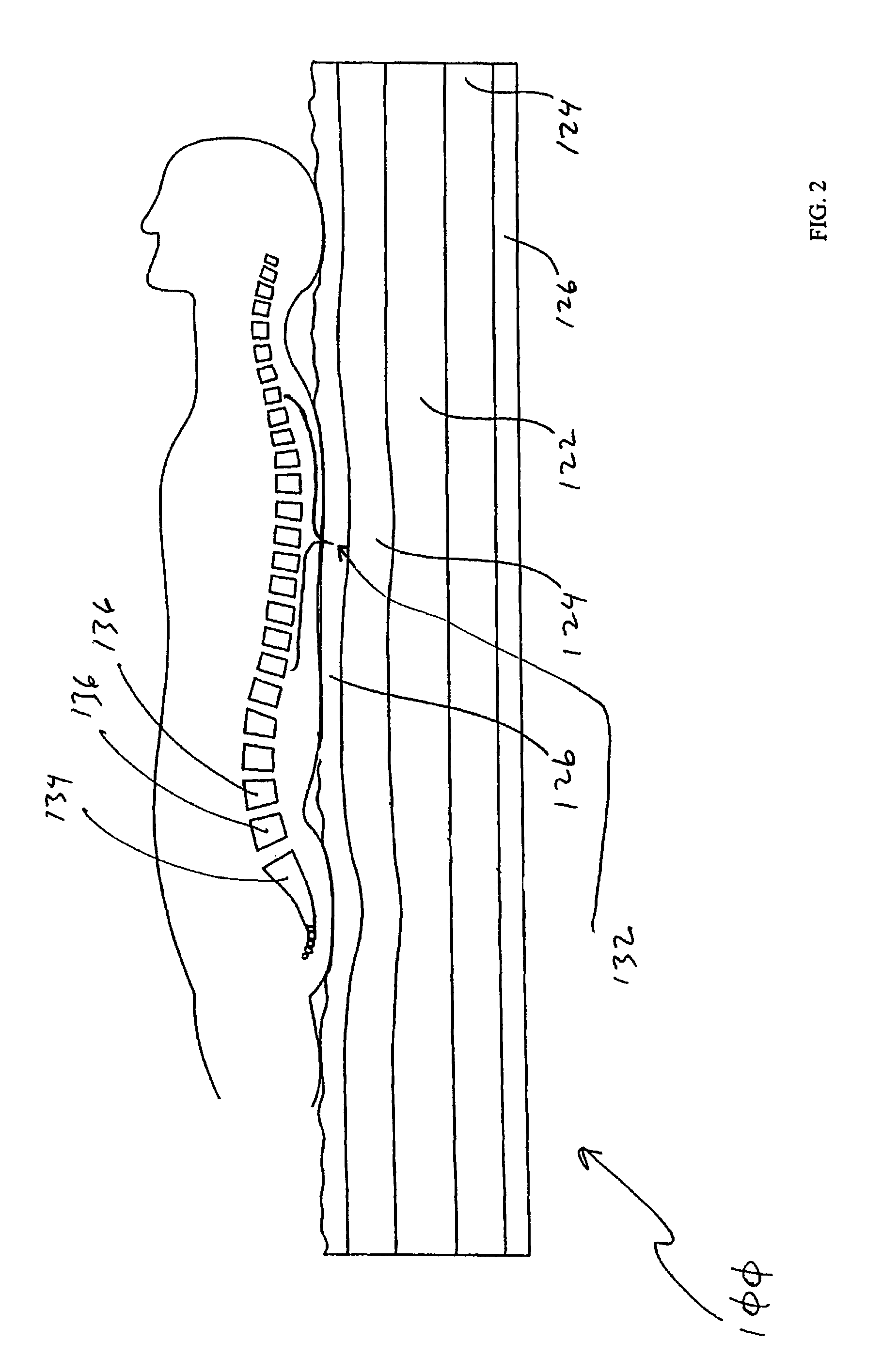Tension relieving body support apparatus
a body support and tension relief technology, applied in the field of mattresses and cushions, can solve the problems of loss of support, and loss of comfort, and achieve the effects of reducing nerve and muscle tension and pressure, preventing lumbosacral hyperextension and thoracic hyperflexion, and minimizing or preventing pressure points
- Summary
- Abstract
- Description
- Claims
- Application Information
AI Technical Summary
Benefits of technology
Problems solved by technology
Method used
Image
Examples
Embodiment Construction
[0026]Referring to FIG. 1, mattress 100 generally has multiple foam layers 120. Foam layers 120 may include core layer 122, intermediate layers 124, and outer layers 126. Mattress 100 presents top surface 128. Top surface 128 of mattress 100 generally evenly redistributes the weight of a user through foam layers 120 to minimize pressure points and mattress sag between the user and mattress 100.
[0027]Although mattress 100 illustrated in FIG. 1 has five foam layers 120, mattress 100 can have two to seven foam layers 120 without departing from the spirit and scope of the present invention.
[0028]With regard to foam layers 120 making up mattress 100, core layer 122 generally has a relatively high IFD, intermediate layers 124 generally have a relatively medium IFD, and outer layers 126 generally have a relatively low IFD. Each intermediate layer 124 is generally coextensively positioned between core layer 122 and outer layer 126. In an example embodiment, the IFD of each foam layer 120 pr...
PUM
| Property | Measurement | Unit |
|---|---|---|
| thickness | aaaaa | aaaaa |
| density | aaaaa | aaaaa |
| density | aaaaa | aaaaa |
Abstract
Description
Claims
Application Information
 Login to View More
Login to View More - R&D
- Intellectual Property
- Life Sciences
- Materials
- Tech Scout
- Unparalleled Data Quality
- Higher Quality Content
- 60% Fewer Hallucinations
Browse by: Latest US Patents, China's latest patents, Technical Efficacy Thesaurus, Application Domain, Technology Topic, Popular Technical Reports.
© 2025 PatSnap. All rights reserved.Legal|Privacy policy|Modern Slavery Act Transparency Statement|Sitemap|About US| Contact US: help@patsnap.com



